Kojève & Cigarettes
Fact-checking American Geist
Hunter Dukes
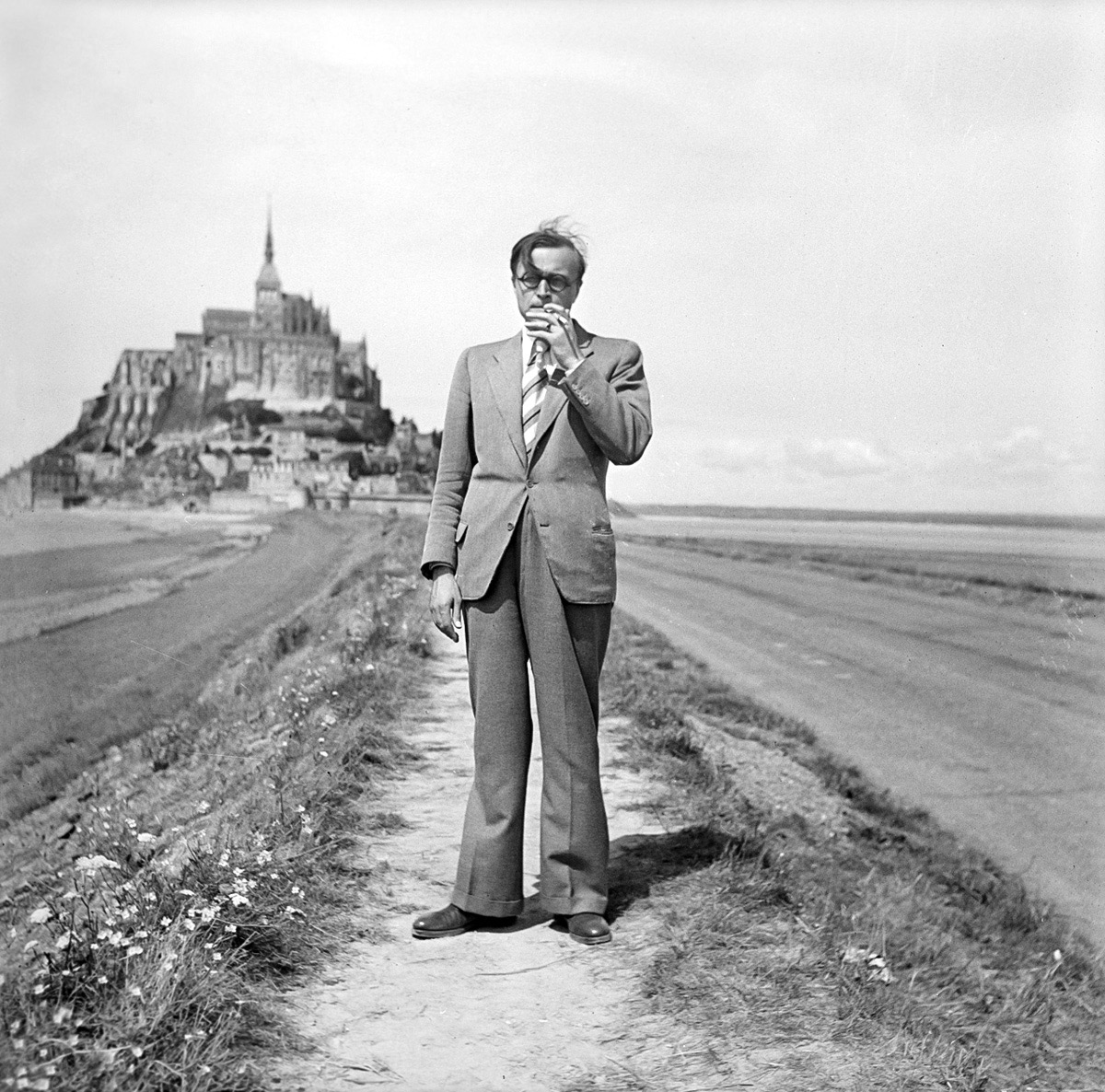
There is no existential, Kierkegaardian uniqueness in the individual cigarette, only an abstract Hegelian generality.[1]
—Richard Klein
There never was a cigarette for Hegelian smokers.[2]
—Sharon Hennessey
At a party on Neckarstraße one hopeless weekend last January, I escaped into the twofold luxury of potent conversation and mild inebriation in the company of Klaus V
Yet this is neither here nor there. At some point in the early morning, having forfeited my grip on the laminate, I was squeezed onto a balcony between Klaus and a very tall Polish American man, who was telling us about an upcoming trip to Kerala, where he would seek ayurvedic realignment after a season of encounters with unmitigated evil in Berlin. A third figure in a stiff leather jacket produced a red packet of cigarettes and distributed them with gravity, as if they were full-bodied charms. Klaus asked a question. Did you know that American Spirit was founded by one of Kojève’s graduate students, who named the tobacco company after Hegelian Spirit or Geist? I did not. This is the same Alexandre Kojève who had been born into Russian aristocracy, fled to Berlin after the October Revolution (and after an arrest for black-marketing soap), financed his early life by selling off the family jewels, enshrined himself as a chief architect of the European Economic Community, spied for the Kremlin for decades (or so it has been posthumously conjectured, without thorough proof), and did more than any other philosopher to shape the reception of Hegel’s thought in twentieth-century Europe. He was also, it seems, fond of anecdote, and liked to recycle one in particular. It went something like… when Hegel was asked, during a lecture on the philosophy of history, about the spirit of America, he thought for a moment and then replied: tobacco! A wayward graduate student with waning academic fortunes was sitting in Kojève’s classroom during one of these recitations. An idea sparked in his mind; he launched a tobacco company in Santa Fe soon after. The rest is, well, history: American Geist is now available wherever cigarettes are sold.
Several weeks after his departure back to the United States, I could not shake Klaus’s story. It took me a while to figure out why. There was the intellectual element—it felt important to cut to the heart of things—and the glaring problem of dates: Kojève gave his influential lecture series on Hegel’s Phenomenology of Spirit at the École Pratique des Hautes Études in Paris between 1933 and 1939, and died in 1968; the Santa Fe Natural Tobacco Company, manufacturer of Natural American Spirit, was founded in 1982. But surely there were later lectures, I thought, or maybe the story metamorphosed in its telephone game–like transmission from smoker to smoker, fête to fête. What’s more likely: that there is a wisp of truth here somewhere, or that it’s all just smoke?
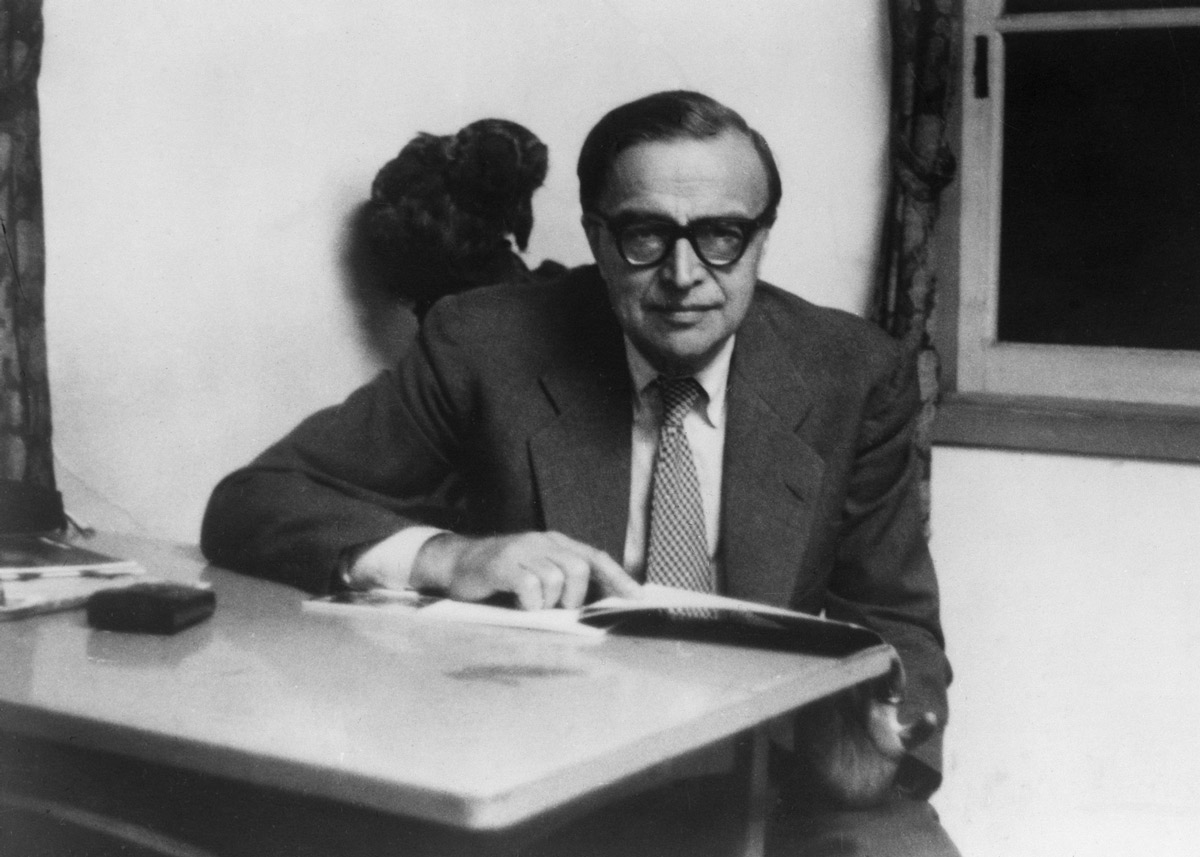
My nights grew longer. Klaus had surely read it all before, but I knew next to nothing. I scoured PDFs of Hegel, with no instinct as to whether tobacco was a matter of phenomenology, aesthetics, or religion. I read Kojève’s commentary on Hegel, and learned that to eat food (and presumably inhale burning leaves) is to assimilate “an alien reality” into one’s body and mind. I happened upon Hegel’s predilection for snuff early one morning when my eyes were finally closing, and resumed, quite eagerly, this research the next evening, discovering how a tobacconist had once tried to make him the brand ambassador for a particular blend; Deutscher Geist?[4] I read that Kojève had a penchant for snark and bons mots—asked his thoughts on Lacan, he replied: “Il gagne beaucoup d’argent” (He makes a lot of money)—and was known to “smoke constantly, waving a cigarette holder as he talked.”[5] And yet, each lead that glowed with bright potential in the blue light of my laptop’s screen routinely assumed a chlorotic shade with the break of day. Eventually I was forced to admit that I had discovered no evidence that Kojève ever said such a thing, and unearthed no indication that Hegel ever made such a quip.
Yet my preliminary investigations online showed that Klaus was not the story’s only source. On Facebook, a page named “The Bust of Hegel 黑格尔头像”—with a shocking 51,900 followers—gave the following account:
There’s actually an interesting connection between American Spirit cigarettes and Hegel; they’re named after something he said. In one of Hegel’s lectures on the Philosophy of History, a young Ludwig Feuerbach (who was an avid attender of the old master’s lectures) asked the question, “Professor Hegel, you have told us about the Oriental Spirit, the Greek Spirit, the Roman Spirit, and the Germanic Spirit. But what is the American Spirit?” Hegel (a big fan of snuff) immediately replied “Tobacco is the American Spirit.” Many, many years later, Bill Drake (who had studied under Kojève) founded the Santa Fe Natural Tobacco Company and started producing American Spirit cigarettes, named in honour of the philosopher who shaped his thinking more than anybody else.[6]
On Twitter, a user named “Mycn Il-abn Dikaryon, عَزَّ وَجَلَّ,” whose profile picture is cropped from a fifteenth-century Timurid manuscript depicting Mohammad’s night ascension to heaven on Buraq (a winged, horse-like humanoid), offered a similar explanation:
Ah yes. American Spirits and Hegel, fascinating connection. Of course, as we know, the naming of American Spirit cigarettes is a reference to Hegel’s lectures on the Philosophy of History, where a young Feuerbach asks the question, “What is the American Spirit?”
And Hegel, being the master of dialectics, sniffles, immediately replied “Tobacco is the American Spirit.” And, as we know, Bill Drake, who studied under Kojève, founded the Santa Fe Natural Tobacco Company and named his cigarettes in honor of the philosopher who shaped his thinking more than anyone else. And so on, one could say that the American Spirit cigarettes themselves are a dialectical product, a synthesis of the American and the Hegelian spirit. And so on, and so on[7]
Finally, a quote tweet from Anton Jäger, a historian of political thought at Oxford, summarized my prevailing mood during this research: “I’m losing my mind over here.”[8] He was responding to an account called “abcdent,” who wrote the following text:
The Santa Fe Natural Tobacco Co was started by Bill Drake, allegedly a student of Kojève—he took the “American Spirit” name from a story of a lecture in which Hegel was asked what the American spirit is, and his reply was “tobacco”
I must stress that i have not found a single source for this claim, I just want it to be true[9]
I did too and tried to trace this story back to its origin. Mycn Il-abn Dikaryon, عَزَّ وَجَلَّ tweeted on 27 January 2023. That account follows abcdent, who tweeted on 30 March 2022. Perhaps the former user first heard the story from the latter. When I messaged both of them, Mycn Il-abn Dikaryon replied:
what did I say?
oh yes
i probably came up with that on the fly
but i can never be too sure[10]
He did not exactly convince me (nor himself, evidently). Abcdent offered a different etiology: “Can’t remember exactly who posted it but I remember seeing it on here years ago. I might have seen it a few years earlier on literature forums as a teenager too. It’s always that one facebook screenshot.”[11] I assumed this was a screenshot of The Bust of Hegel 黑格尔头像 post, which dates to 29 January 2019, almost four years to the day before Mycn Il-abn Dikaryon’s own, and which has circulated with frequency ever since.
When I wrote to The Bust of Hegel, I received only an automated reply in Polish: “Witaj! Dziękujemy za nawiązanie kontaktu. Otrzymaliśmy Twoją wiadomość i jest nam niezmiernie miło” (Hello! Thank you for getting in touch with us. We have received your message and are extremely pleased).[12] Now perhaps it was the late hour, or the deficit of sleep I had accrued in recent weeks, but the message felt—and I know it sounds odd—like it was intended… for me. What was The Bust of Hegel? Why was it extremely pleased to receive my message? Was this all some elaborate ruse? That is, could the story have been disseminated for exactly this purpose: to ensnare the minds of social smokers with intellectual pretensions? In my mind, the message seemed to rub against my balcony mate’s descriptions of malignancy, just like the Timurid avatar vaguely rhymed with Klaus’s interest in Transoxiana. I quickly texted the former man, asking if he could help with the Polish, and he confessed that he used to follow The Bust of Hegel “religiously” and relayed that niezmiernie does indeed mean “extremely” but carries an additional, “almost cheeky” sense, which only served to confirm my suspicions (though of what, exactly, I’m no longer sure).[13] Nor did it escape me at the time that each of these social media posts appeared in winter, the same season in which I was chasing after their truth. (One was technically posted in early spring, but that was close enough to confirm a pattern, right?)
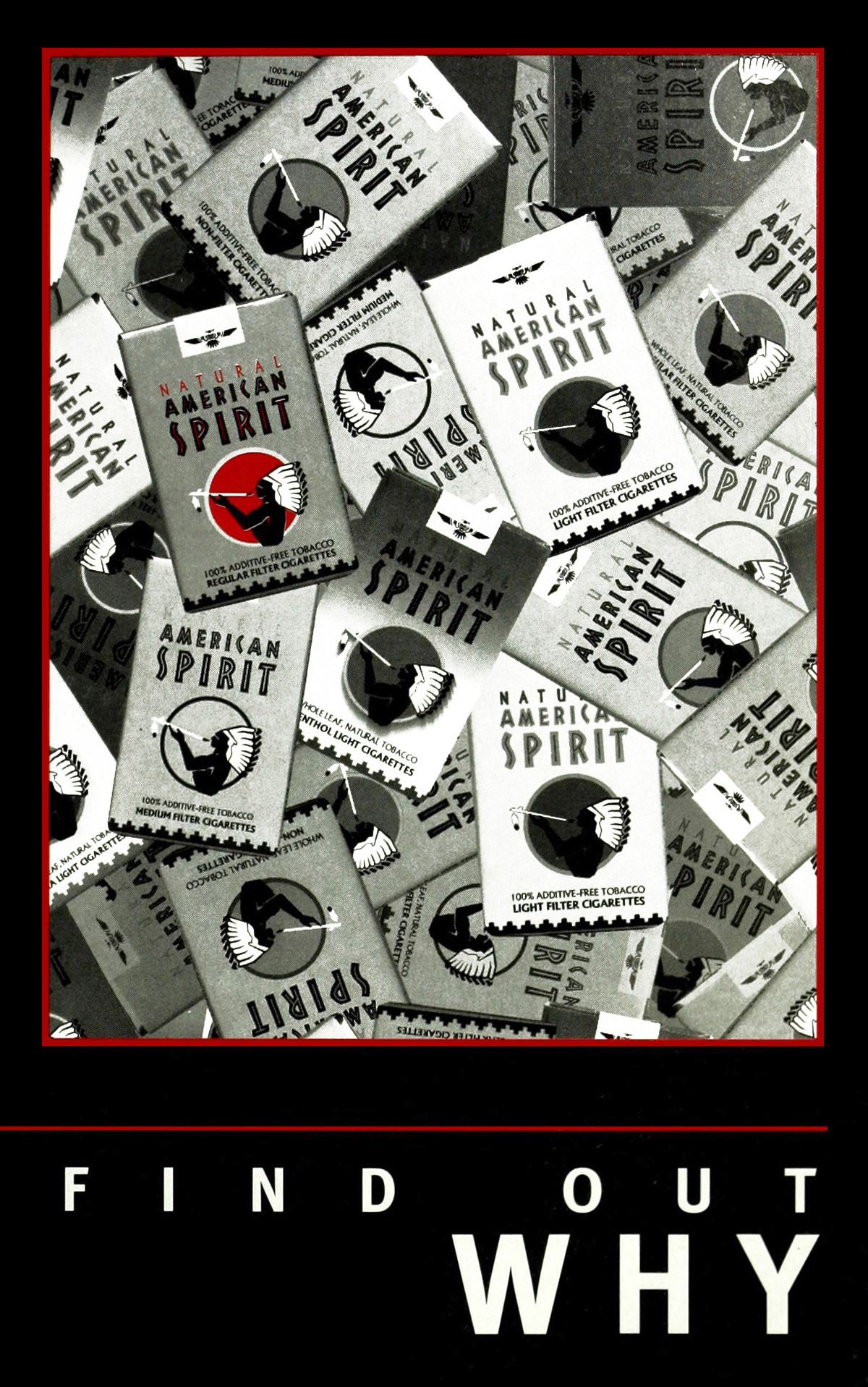
There was the personal element too, which kept me searching for Klaus’s Kojève. With my wife back in Helsinki for an indeterminate period, I spent restive evenings reading old college papers—rarely a sign of mental wellbeing—and found an essay on the struggle for recognition in Kojève’s Introduction to the Reading of Hegel, a book I had been drawn to for its amaranth cover—featuring only text and a single, inviting spiral. As a twenty-year-old, I was fascinated, however improbably it now seems, by the presumed origins of self-consciousness in the dialectic of lordship and bondage, a parable that imagines two human beings, whom Kojève calls men, fighting to death at the beginning of history. My summary was (and remains) shallow and revealing. Each man thinks he is self-conscious until he meets the other. Now they are not so sure and seek recognition from their peer; domination presents itself as a suitable track toward this goal. Right before the victor finishes off his opponent—who by some accident of circumstance has gained the lower hand—the victor decides to subjugate his defeated foe instead. It’s a rational decision: if no one is left to recognize you, how can you be certain that you are indeed self-aware? The master puts his subject to work and soon becomes dependent on the servant’s toils, his captive audience. Over time, the servant achieves an autonomy, independence, and freedom through his labor that the master can never know, contingent as he is. The subsequent arguments in this paper have not aged well and deserve no relitigation here, but they mark a particular departure: the moment when I reneged on a practical degree and pivoted instead toward books. It seemed like the right path for a time: better grades brought long-desired acknowledgement from professors; a scholarship ferried me to England; a lectureship to Finland. But my academic star finally collapsed almost exactly a decade after setting foot in Europe. Whether I lost interest in the academy or it lost interest in me remains a matter of tortured internal debate. But Klaus’s meteoric rise on the tenure track—his former supervisor, whom I met some weeks later, described his talents as truly terrifying—offered a discomforting foil for my own manifold failures through no single fault of his own.
For weeks after Klaus’s visit, I could not sleep without interruption. I fantasized about smoking alone, a habit I had kicked after college, and envisioned myself rolling lopsided creations from pouches of American Spirit perique during the long walks I would take through the city—unwilling to sit alone in our sublet apartment, surrounded by the furnishments of an absent family’s memories—returning each night with no new ideas for how to untangle the knot, and more depressed in spirit than I had ever known myself to be. One day my inquiry took a further turn, as can be the nature of things, when I ran into the man with the leather jacket, whose innocent act of cigarette distribution had put into motion the machinery that was slowly upending my life. I cornered him in a bar on Hermannstraße, and started to explain “my research,” as I had begun to call it when my wife would telephone, a note of consternation in her voice. He told me that he too had been looking into Kojève, for unrelated reasons, and realized it all goes back to cheese. Alexandre Kojève had originally agreed to substitute for Alexandre Koyré (yes, the congruency struck me too) at the École Pratique des Hautes Études, giving lectures—which were collected by Raymond Queneau and later published as Introduction to the Reading of Hegel—because he needed the money, having lost much of his wealth after he made a bad investment and put it all on red: the jolly red face of La vache qui rit, The Laughing Cow.[14] The stock market crash of 1929 spoiled Kojève’s investment in dairy; he turned to philosophy for pecuniary cheddar.
I must admit that these facts did not make anything more lucid, but they did affirm my quest—if this story about Kojève can be true, why not the other too? I decided to take a different tack and went searching for Bill Drake, who co-founded the Santa Fe Natural Tobacco Company. LinkedIn returned seventeen pages for a search of that name. Google directed me to one particular Bill, who initially looked like a non-starter. I had anticipated the profile picture of a tobacco executive—dark suit, limp part, maybe a media-baiting straight—but Bill had a neat gray beard, kind eyes, and wore a ZZ Top tee. A banner stated that he was #OPENTOWORK; his last job had him teaching English on Zoom to small teams of professional recruiters in India and Ghana. And yet, as I scrolled through his CV—past a position as a writer for Authentic Genetics, a “legal heirloom-quality Cannabis” company, an adjunct professorship at University of Texas, Dallas, teaching international management, and a presidentship with William Drake & Associates, consulting for AT&T, Mitsubishi, and Shell—I found the first job listed: Founder/Co-President, Santa Fe Natural Tobacco Company (Jun 1981–Aug 1984). His description for this role offered an origin story for the now world-famous company. “I invented the brand ‘American Spirit’ and based the logo on a 19th Century lithograph entitled ‘The Spirit Smokes’ - an image I found while doing research in the Arends Tobacco Collection at the New York Public Library.”
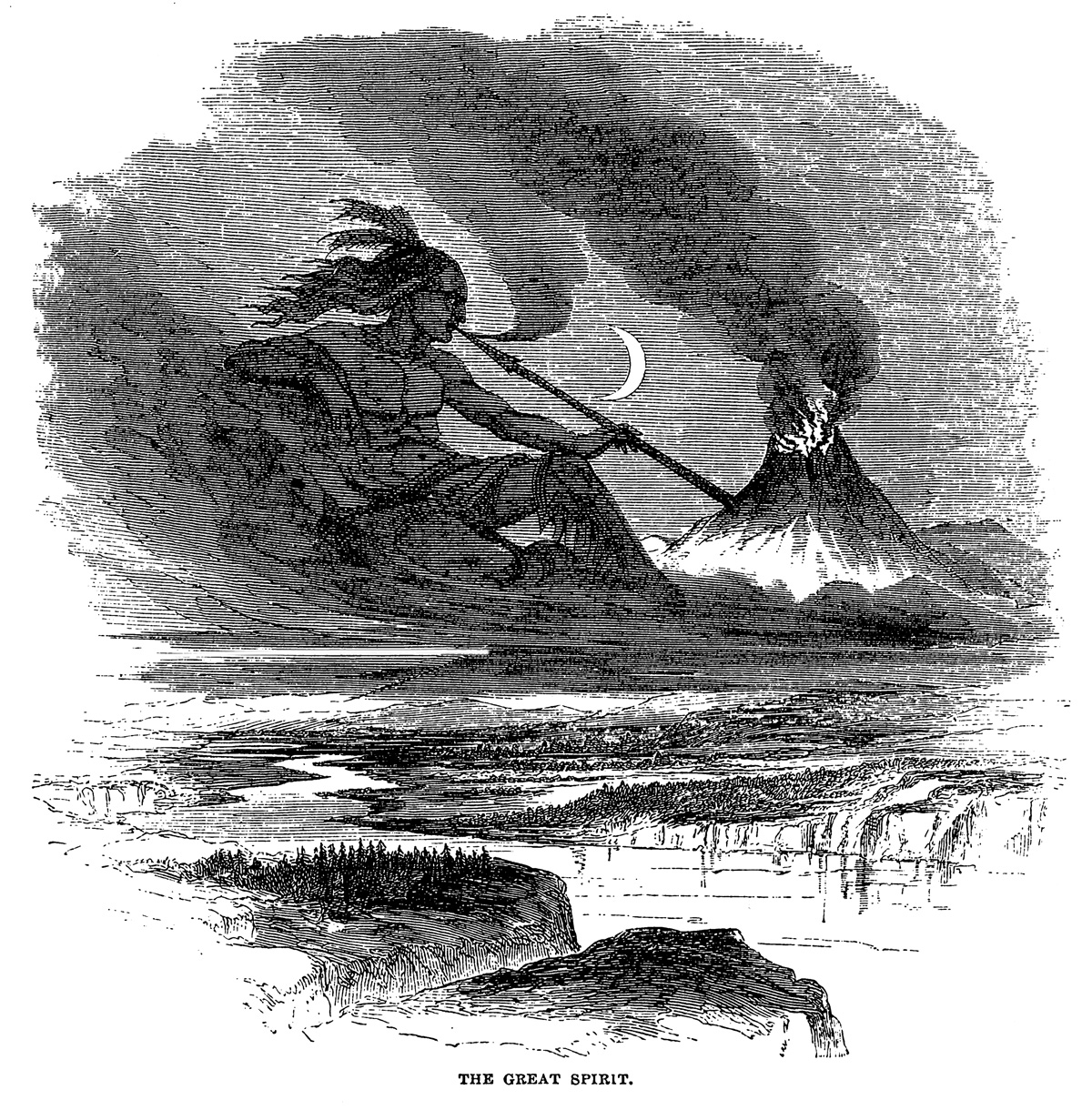
No Kojève. No Hegel. But that pair doesn’t make for the best LinkedIn copy. I wrote Bill Drake a message that, in retrospect, reads as somewhat unmoored, and sought after this alt-Geist while awaiting his reply. In the NYPL’s digitized George Arents collection, I found an illustration called “The Great Spirit,” pasted on cardstock alongside a page from E. G. Squiers’s Ancient Monuments of the Mississippi Valley (1848). It shows a Native American giant, whom I assumed to be an avatar of divinity, puffing an erupting volcano. The present-day American Spirit logo also has a human silhouette but instead of lava, there is only a vibrant circle, perhaps a blood-red sun. Yet when I combed through cigarettecollector.net—past Mogul Egyptian and Murad Turkish cigarettes, aromatic Cookie Jars and a pack of Listerines—I found the original design that Bill described, almost identical to the image held by the NYPL. The tobacco graphic forgoes the soft borders of the Arents version, which give it a dreamlike effect, as if the Spirit is smoking itself into existence on the page. And the smoker’s cloud does not merge seamlessly into the volcanic plume as before. It remains cut off, distinct.
I wanted to learn more about the Great Spirit—which seemed to be an anglophone catchall for indigenous North American beliefs in a creative, historical force. According to one account: “The Great Spirit was the God of creation, the God of history, and the God of eternity, rewarding the righteous and punishing the wicked in this life and in the world to come.”[15] Soon after, I found a quotation from Minavavana—chief of the Chippewa or Ojibwe Nation, who famously warned English settlers in 1761 (the year of Hegel’s grandfather’s death) against claiming sovereignty over Native lands. Minavavana described his people’s relationship to trade, their refusal to become debtors to some colonial lord:
Englishman. … We are not your slaves. These lakes, these woods and mountains were left to us by our ancestors. They are our inheritance; and we will part with them to none. Your nation supposes that we, like the white people, cannot live without bread—and pork—and beef! But you ought to know that He, the Great Spirit and Master of Life, has provided food for us in these spacious lakes and on these woody mountains.[16]
The speech ends with amnesty, assuring the English trader to whom it was addressed that he may sleep without fear of violence, and offering him a pipe to smoke as a token of friendship. Perhaps this image of the Great Spirit infusing lakes and mountains with sustenance explains the choice, however regrettable, to impress the volcanic logo onto cigarette packets. Inhale the god-given earth, rich in spirit; nothing could be more pure.
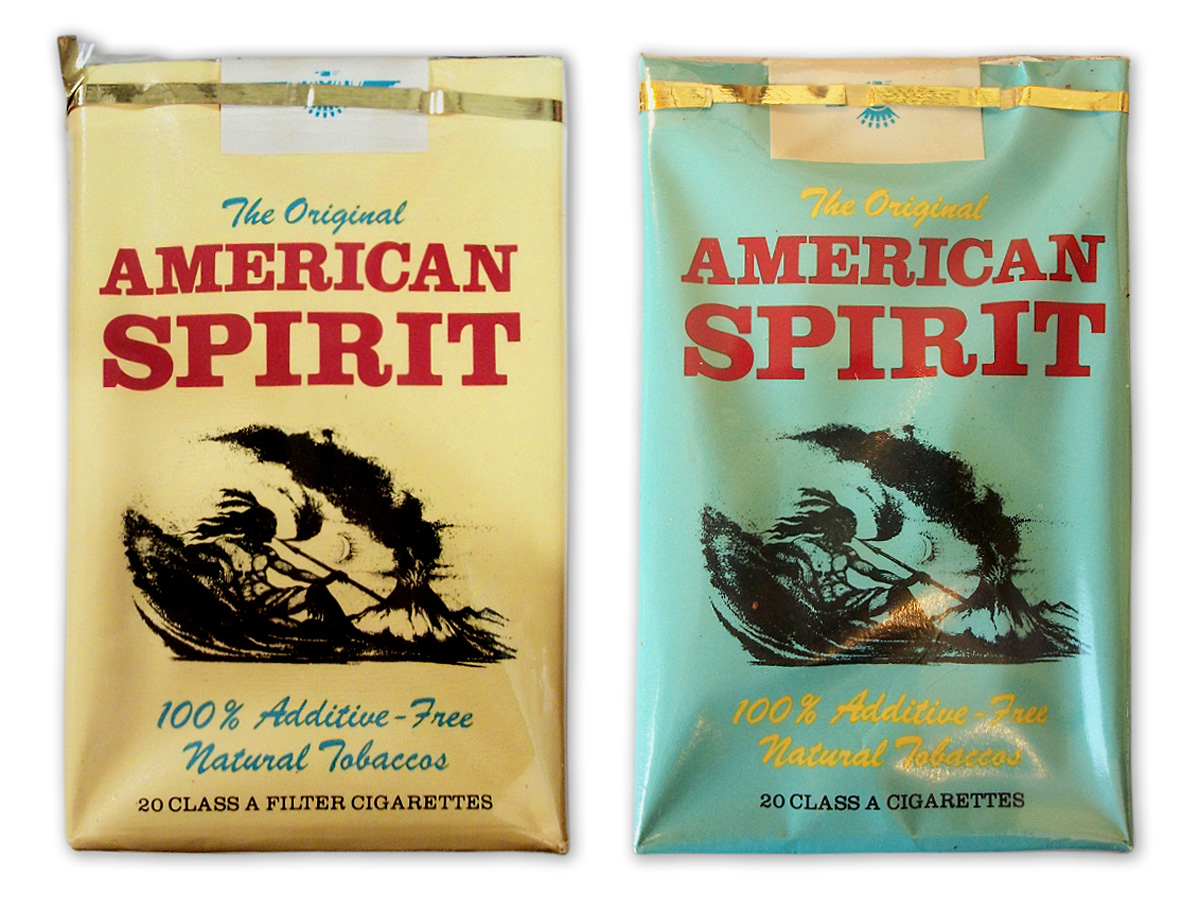
I had begun to read an anthropological study of the Great Spirit when a letter from Bill Drake chimed in my inbox. It contained seven poignant sentences that instantly cast my last weeks into further disarray.
Sorry to step on a good story but American Spirit wasn’t inspired by Hegel. The origin was in my thinking about the four gifts of the Great Spirit - corn, beans, squash, and tobacco.
Tobacco was medicine, energy, and vision - walking the smoke path to the spirit world. Its seeds were buried with shamans to accompany them on the journey.
I wanted to reconnect tobacco with its original meaning through that name.
As an aside, Japan Tobacco thought enough of the power of that name to pay around $6 billion for the world rights a few years back. I work bagging groceries to pay the rent. Maybe I pissed off the Great Spirit?[17]
I reread his email several times on the tram home from work that evening, haunted by its final couplet, this personal failing, the historical revenge, his almost cheeky tone. Eventually, I texted Klaus—seeking something, I’m not sure what—and downplayed the time I had sunk into my errand. “Amazing thanks for checking, although a great grad student anecdote forever quashed.”[18] He was right, of course, and yet…
I went to bed early that evening, and woke to what sounded like a pigeon getting mauled.
- Richard Klein, Cigarettes Are Sublime (Durham, NC: Duke University Press, 1993), pp. 30–31.
- Sharon Hennessey, “Concerning the Metaphysical Nature of Cigarettes,” in Making WET: The Magazine of Gourmet Bathing (Point Reyes, CA: Imperfect Publishing, 2012), p. 43.
- For al-Jahiz’s crushing, see James E. Montgomery, “Jahiz, Al-,” in Medieval Islamic Civilization: An Encyclopedia, ed. Josef W. Meri, vol. 1 (New York: Routledge, 2006), p. 411. For an article-length discussion of Alkan’s death, see Hugh Macdonald, “More on Alkan’s Death,” The Musical Times, vol. 129, no. 1741 (March 1988), pp. 118–120.
- See Terry Pinkard, Hegel: A Biography (Cambridge: Cambridge University Press, 2000), p. 625.
- Alexandre Kojève quoted in Stanley Rosen, “Kojève’s Paris: A Memoir,” in Hommage à Alexandre Kojève: Actes de la “Journée A. Kojève” du 28 janvier 2003, ed. Florence de Lussy (Paris: Bibliothèque nationale de France, 2007), pp. 70, 80. Olivier Wormser recounts analogous pith in “Mon ami Alexandre Kojève,” Commentaire, no. 9 (Spring 1980), p. 120. When a French ambassador in Washington joked that two of Kojève’s colleagues were Bouvard and Pécuchet, angling after an unattainable goal, and then asked what role Kojève played in their project, he replied: “Monsieur l’Ambassadeur, Flaubert.”
- The Bust of Hegel 黑格尔头像, Facebook, 29 January 2019. Available at facebook.com/bustofhegel/photos/a.2006385106258646/2357229101174243.
- Mycn Il-abn Dikaryon, عَزَّ وَجَلَّ (@heilotia), Twitter, 27 January 2023. Available at twitter.com/heilotia/status/1619049116063129600.
- Anton Jäger (@antonjagermm), Twitter, 27 January 2023. Available at twitter.com/AntonJaegermm/status/1618762331651186688.
- abcdent (@abcdentminded), Twitter, 29 March 2022. Available at twitter.com/abcdentminded/status/1508914438321049604.
- Mycn Il-abn Dikaryon (@heilotia), عَزَّ وَجَلَّ, Twitter message to the author, 26 March 2024.
- abcdent (@abcdentminded), Twitter message to the author, 20 February 2024.
- The Bust of Hegel 黑格尔头像, Facebook message to the author, 2 March 2024. My translation.
- [Name redacted], WhatsApp message to the author, 2 March 2024.
- [Name redacted], conversation with the author, 9 February 2024. For the Kojève, see Rüdiger Safranski, Martin Heidegger: Between Good and Evil (Cambridge, MA: Harvard University Press, 1998), p. 344. “Sidebar,” he continued: “Did you know the name of this pioneering cheese company, still beloved for its spreadable wedge, originates from a World War I homophonic slight against the Germanic obsession with Wagner and La Wal-ky-rie?” Remarkably, this also seems to be true. See Alex Ross, Wagnerism: Art and Politics in the Shadow of Music (New York: Farrar, Straus and Giroux, 2020), p. 260.
- Alfred A. Cave, Prophets of the Great Spirit: Native American Revitalization Movements in Eastern North America (Lincoln: University of Nebraska Press, 2006), p. 2.
- Minavavana quoted in Peter S. Schmalz, The Ojibwa of Southern Ontario (Toronto: University of Toronto Press, 1995), p. 64.
- Bill Drake, email to the author, 8 February 2024.
- Klaus V-- [pseudonym], WhatsApp message to the author, 8 February 2024.
Hunter Dukes is the managing editor of Cabinet.
If you’ve enjoyed the free articles that we offer on our site, please consider subscribing to our nonprofit magazine. You get twelve online issues and unlimited access to all our archives.